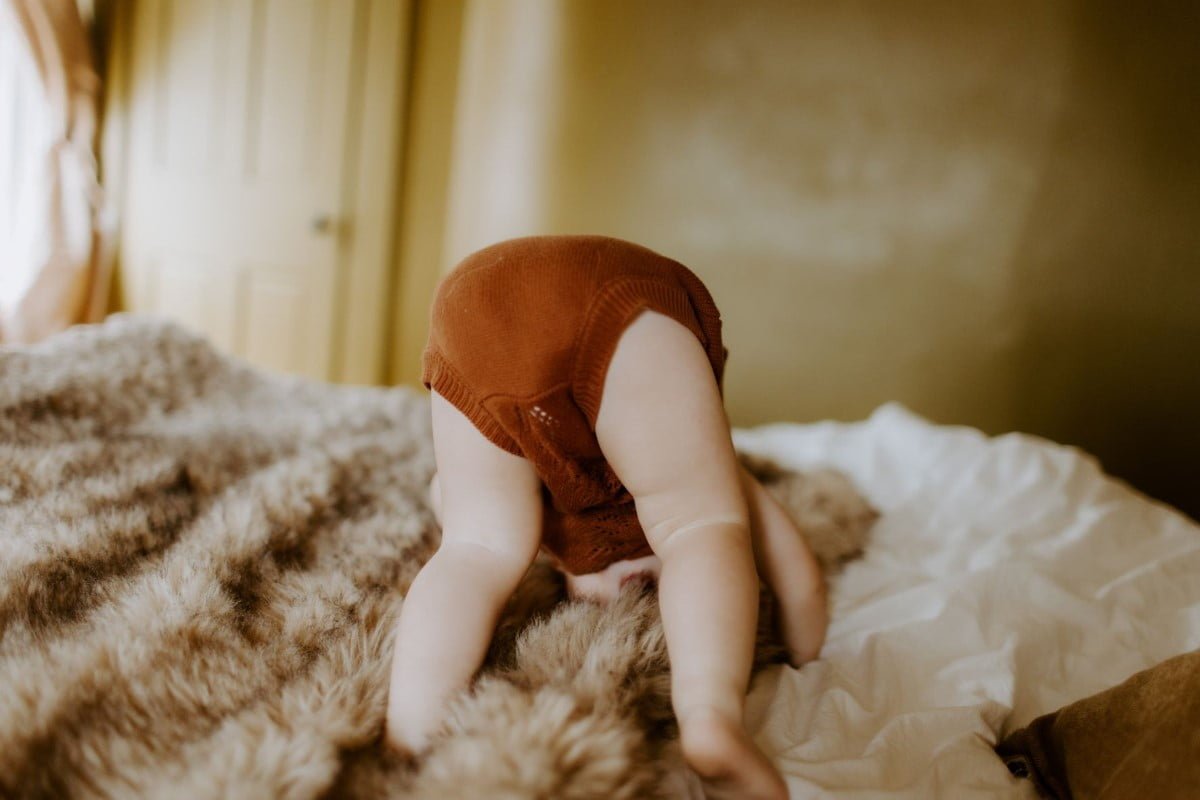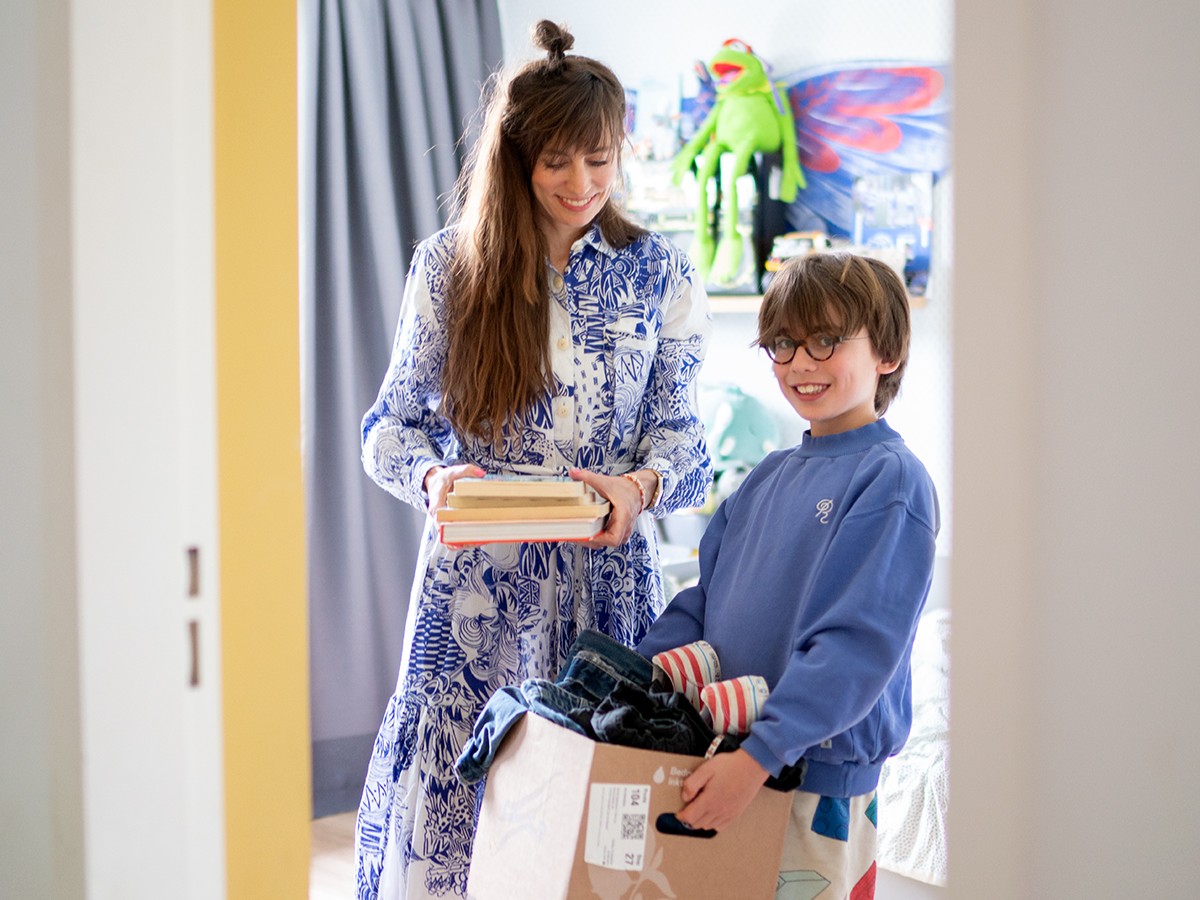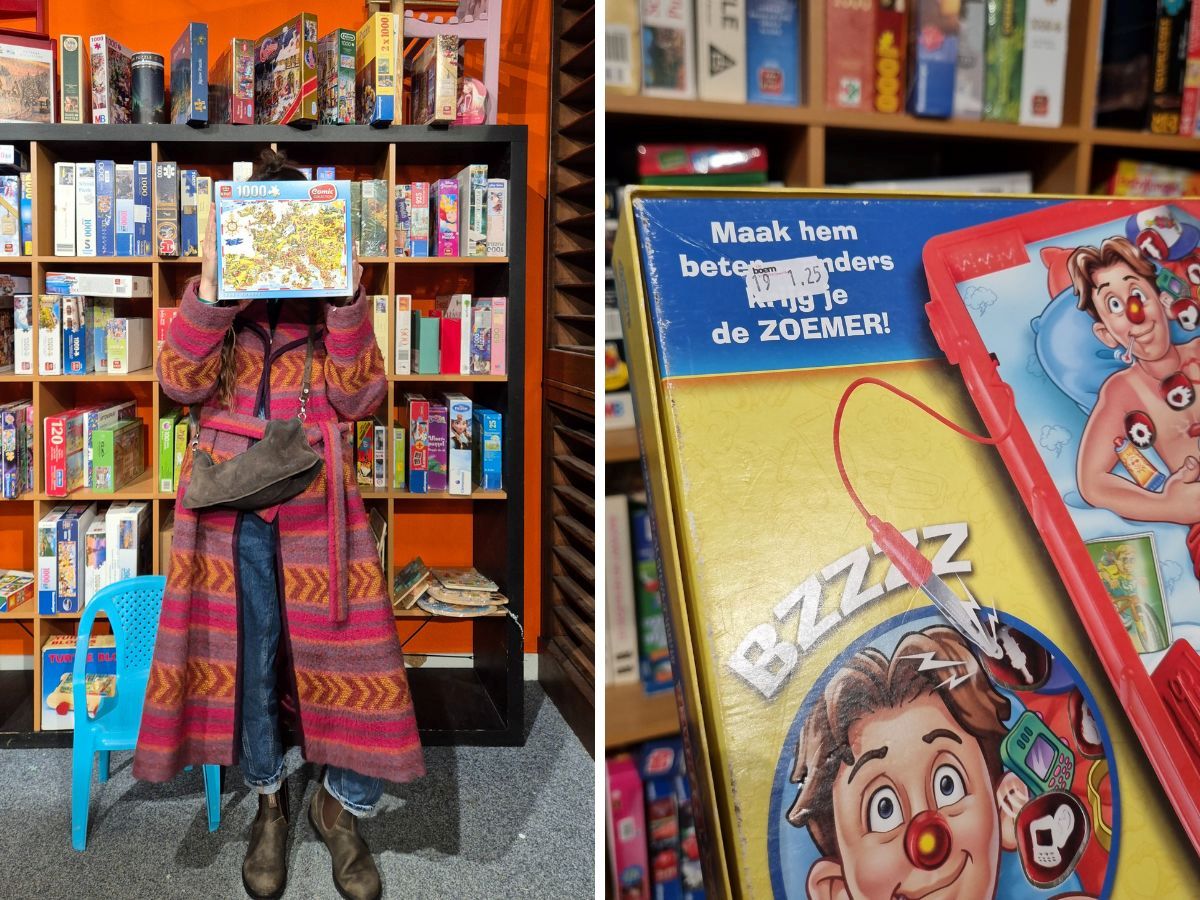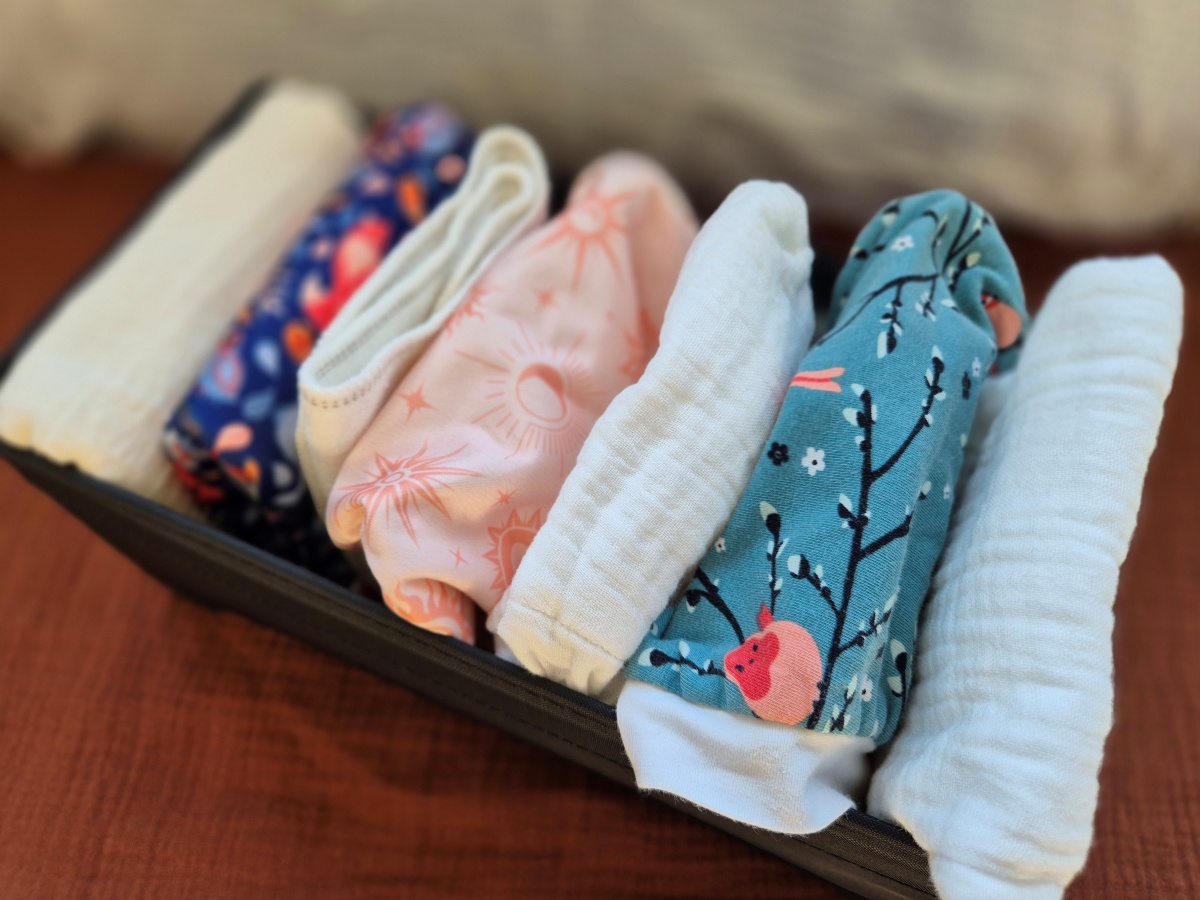A hot topic among parents with young children: washable nappies. Some swear by them, while others should not think about it. That disposable nappies create a lot of waste is certain. But are washable nappies also more sustainable if you include the washing and production of the nappies? And what about sustainable alternatives to disposable nappies? Sustainable mum Kirsten went to find out for us.
Washable nappies versus disposable nappies
With washable nappies, you can save a lot of waste and money. According to Milieu Centraal, with disposable nappies you have about three hundred kilos of nappy waste per year! Also, using disposable nappies will cost you about five hundred euros more per child than washable nappies. But if you want to know whether washable nappies are really more sustainable, you obviously have to factor in the environmental impact of nappy production and washing. There are also sustainable disposable nappies and nappy recycling initiatives these days. So it is a little less black and white than it seems at first glance. In this article, you will read all about the environmental impact of nappies so that you can make an informed choice.
The impact of washable nappies
If you want to know the (negative) impact of nappies, you have to look at the whole picture. From the production of the nappies to waste disposal. So you have to consider the whole life cycle of the product. A recent overview of studies on washable and disposable nappies that take this into account can be found in the report by the United Nations Environment Programme. The conclusion of this report: washable nappies are more sustainable than disposable nappies if they are washed in an economical way. That is, if as little water and energy as possible is used during washing. Since most of the environmental impact of washable nappies is in the washing process, the environmental impact depends heavily on the user. If you follow the following tips, washable nappies are the most sustainable choice.
Tips for washing washable nappies
- Make sure you only run washes with a full washer.
- Ideally, use an energy-efficient washing machine.
- For the environment, it is better to wash the nappies at 40°C and eco mode, but for the hygiene of the nappies, it is recommended to wash them regularly at 60°C and with enough water.
- Prefer not to use a dryer.
You can read more tips on washing washable nappies in this article.
Tips for buying washable nappies
Even though most of the environmental impact of washable nappies is caused by washing; production also has an impact. Therefore, it is wise to inform yourself well in advance and use the nappies for as long as possible. After all, there is a wide range of washable nappies and there are different systems. There is so much to say about that that I have devoted a separate article to it. It would be a shame if you buy a type of nappy that doesn't work for you and then switch to disposable nappies after all. To avoid this, you can borrow or rent washable nappies first so you know if it's what you want. On the website of WasbareluierWereld you will find a list of providers where you can rent washable nappies. Followers of thegreenlist.nl tipped to take a free consultation at, for example, Nappys.nl. Another good tip if you want to know more about washable nappies: the Instagram account of @lierhouse. Finally, the Butt boutique tipped as a shop where you get good advice.


Washable nappies at our home.
Materials of sustainable nappies
Washable nappies are made from all kinds of different materials. If you choose a natural material such as cotton, bamboo or hemp, preferably choose bio-quality fabrics with a environmental mark. There are also washable nappies that have a little polyester added to them. Although producing and washing plastic is damaging to the environment, these nappies do have advantages: they absorb moisture faster, are sturdier and last longer. Therefore, it is hard to say which is more sustainable. With fleece, I would be careful though, because as you can read in this article, microplastic fibres are released when you wash fleece.
A washable nappy needs an outer layer that does not let water through. Commonly used materials are PUL and TPU, both made of polyester. However, you can also choose to use only natural materials, for example by using wool pants. However, wool pants should be be treated with lanolin to make it waterproof and is not vegan. You can read more about woollen overshirts in this article.
I also have more information on the different materials washable nappies are made of. Then take a look at this article.
The finest brands of washable nappies (according to followers of thegreenlist.nl):
So there is a huge choice of washable nappies these days, so it is wise to inform yourself well in advance. Or ask mothers around you who use washable nappies and are enthusiastic about them. Because many followers of thegreenlist.nl are already fans of washable nappies, we asked about their favourite brands:
Want to make it one step more sustainable? Then you can choose to buy second-hand washable nappies. Good brands often last longer than one baby and you can also sell or give them away when you no longer need them yourself.
Another sustainable tip from a follower: for the night, or if your baby pees a lot, you need so-called boosters. These are loose nappy inserts that absorb a lot of moisture. You don't necessarily have to buy these, you can also make them yourself from something you already have that absorbs well, such as a hydrophilic cloth, an old tea towel or even your old sock!
The environmental impact of disposable nappies
Even though more and more parents are fans of washable nappies, there is also a large group that should not think about using washable nappies. As you can read above, the impact of washable nappies depends a lot on how washing is done. For example, if you have an old energy-guzzling washing machine and no green electricity, the environmental impact of washable nappies can be even greater than that of disposable nappies. So with washable nappies, the impact is mainly in the use phase, i.e. during washing. With disposable nappies, this is a different story. Here, the impact is mainly in the production process and in waste disposal.
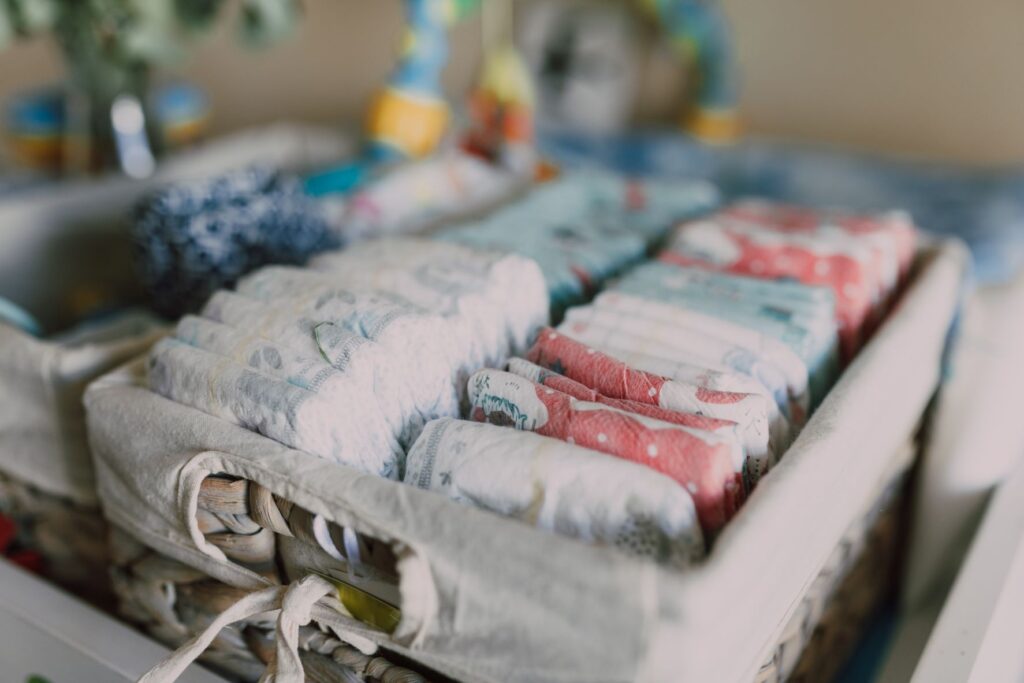
Disposable nappies may be convenient, but they are also lol.
Production process of disposable nappies
Disposable nappies consist of wood pulp, plastic and plastic pellets (to be precise, pellets of Super Absorbent Polyacrylate, or SAP). Making wood pulp requires trees and energy. Moreover, it causes water pollution. The plastic and plastic granules require petroleum. This raw material is not renewable and extracting and processing petroleum is bad for the environment. Finally, energy is needed to produce the nappies and packaging. There is one small bright spot: because the nappies are almost twice as light as before, they are now less bad for the environment, according to Milieu Centraal.


Disposable nappies vs washable nappies from Nappys.
Disposal of disposable nappies
Disposal of disposable nappies also has an environmental impact, although slightly less than the production process. Still, it pays to look at waste disposal. Disposable nappies disposed of in the wrong way can have a lot of negative impact on the environment. Every year, one billion baby nappies are thrown away in the Netherlands. Most of these disposable nappies end up in residual waste and are incinerated in a waste-to-energy plant. This not only releases CO2 but also wastes valuable raw materials that could otherwise have been used to make new products.
Around 40 municipalities in the Netherlands have special waste containers and there are also containers for rent for collecting disposable nappies so that they can then be recycled. Sounds good right? Only problem now is that there is currently only one factory in the Netherlands that can recycle disposable nappies (the ARN in Nijmegen). This means that the vast majority of collected disposable nappies are still incinerated. Still, it is not completely useless to collect disposable nappies separately, because the more people do so, the more obvious it becomes that there is an urgent need for more capacity to recycle nappies. Or to try washable nappies after all, because even though energy and resources can be recovered when recycling disposable nappies, the process itself also consumes a lot of energy.
Tips for sustainable disposable nappies
Now that we know where the environmental impact of disposable nappies comes from, we can see if there are more sustainable alternatives and how you can reduce this negative impact. Here are a few tips:
- Not all disposable nappies are the same. More and more nappies on the market are made (partly) from natural materials. These products are generally better for your baby's skin and for the environment. Yet these nappies are not always more sustainable in all respects. Sometimes, for example, natural ingredients require more farmland or water, which in turn makes it less sustainable.
- What you can look out for, however, is to buy nappies that have a hallmark, so you know that the raw materials were obtained in a fair way. Hallmarks for disposable nappies are the FSC, Nordic Ecolabel or PEFC labels. Examples of brands that comply with one or more of these labels are: Lillydoo Green, Bambo Nature, Eco by Naty, Pura, Eco Muumi and the Pure & Soft nappies from Kruidvat.
- New parents usually want to do everything perfectly. A new nappy is often put on for every pee, but this is really not necessary. Change the nappy only for a big message or when it is really full. That way, you avoid unnecessary waste. And don't buy too many nappies in the smallest size, because they will soon outgrow them.
- Never dispose of dirty disposable nappies with your organic waste, even if the manufacturer states on the packaging that the nappies are biodegradable. Used disposable nappies belong with residual waste.
- The negative impact of disposable nappies depends on the weight of the nappy. Therefore, choose a nappy that is as light as possible. Save the super absorbent nappies for at night and put a lighter nappy on your child during the day.
- The sooner your child is potty-trained, the fewer nappies you will need. There are even parents who don't need nappies at all because they pay attention to their baby's signals from birth and then hold their child over the potty or toilet. When I first heard this, it sounded very implausible to me. But when I read more about baby potty training communication and paid close attention to the signals with my second child, I believe this is definitely possible. Of course, you have to invest some time and effort in it, but this will pay off afterwards.
Hybrid nappies and hybrid handling of nappies
Can't decide between washable nappies or disposable nappies? There are also intermediate solutions. There are hybrid nappies from Pampers which consist of washable trousers and a disposable inner part. Unfortunately, what the exact environmental impact of these nappies is, I have not been able to find. To make it really sustainable, the disposable inner nappy would have to be a lot lighter than normal nappies, because otherwise you have the impact of the inner nappy as well as of washing the overpants.
There are also many parents who, for example, use washable nappies during the day and disposable nappies at night or on holiday. If you are interested in washable nappies but are not sure if it is for you, you can of course just start with one or two (second-hand) washable nappies and slowly switch. Or start with a washable swimming nappy. Every little bit helps.
The impact of washable versus disposable nappies
As with many sustainable issues, there is no ready-made answer as to what exactly is the most sustainable choice. With disposable nappies, the impact is mainly in the production process and waste disposal, while the impact of washable nappies is mainly in the use phase. So whether washable nappies are more sustainable than disposable nappies depends mainly on the user. If you wash in an energy-efficient way, washable nappies are generally more sustainable. You do this, for instance, by only doing full washes and not using a dryer. Even if you choose disposable nappies, you can do this a bit more sustainably. Choose labelled disposable nappies and try to use as few nappies as possible by not putting on a clean nappy for every pee. And for both types of nappies, the sooner your child is potty-trained, the better for the environment and, of course, for your wallet.
More sustainable tips from thegreenlist.nl
- Also see: Sustainable baby gear: what do you really need (and what can be second-hand)?
- Also see: the list of the cutest sustainable maternity gifts.
- Also see: Breastfeeding tips, so you are well prepared.
- Also see: A sustainable pregnancy: how to go about it?
Sources: Milieu Centraal, greenbutt on materials, Milieu Centraal about nappies, Information on PUL and TPU, About nappy recycling, research on nappies, from nappy to raw material. Photo credits: Juan Pablo Serrano Arenas (Pexels), Leah Kelly (Pexels), Kirsten Schoner & Nappys.

